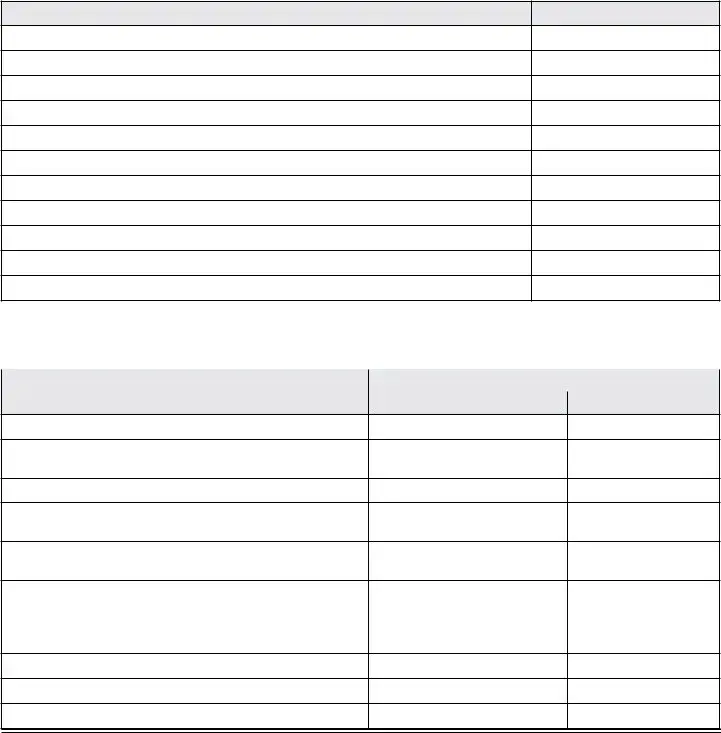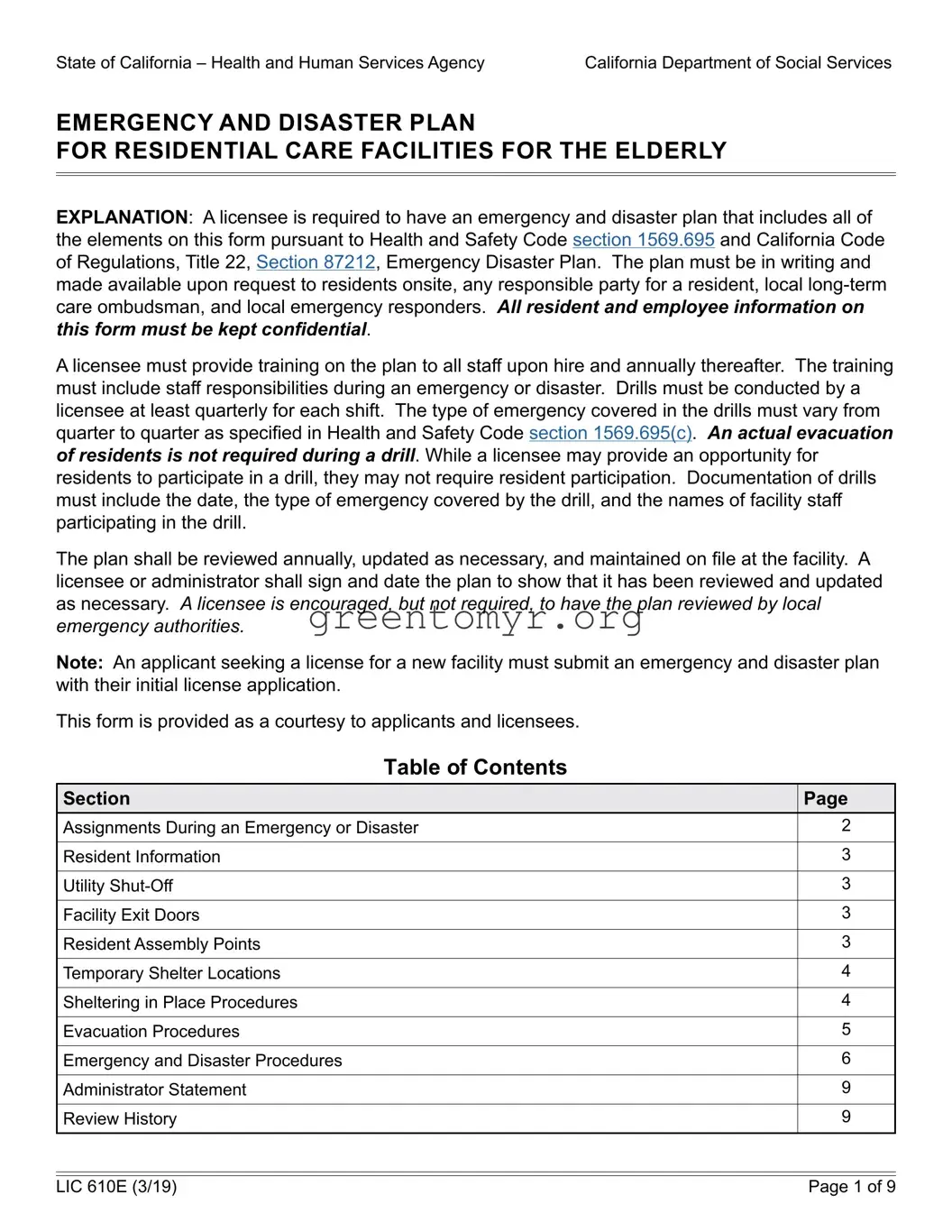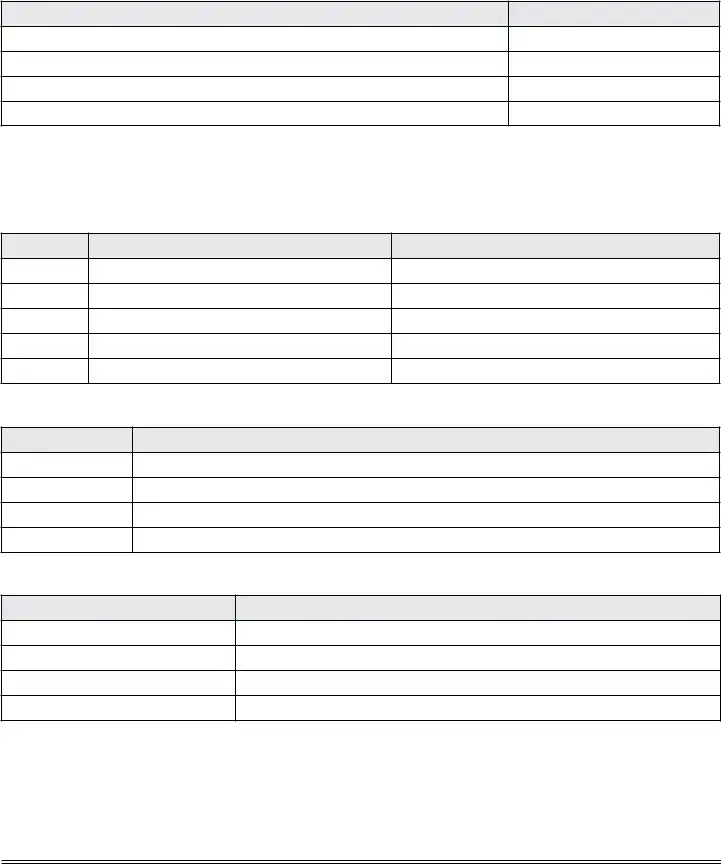
State of California – Health and Human Services Agency |
California Department of Social Services |
EMERGENCY AND DISASTER PLAN
FOR RESIDENTIAL CARE FACILITIES FOR THE ELDERLY
EXPLANATION: A licensee is required to have an emergency and disaster plan that includes all of the elements on this form pursuant to Health and Safety Code section 1569.695 and California Code of Regulations, Title 22, Section 87212, Emergency Disaster Plan. The plan must be in writing and made available upon request to residents onsite, any responsible party for a resident, local long-term care ombudsman, and local emergency responders. All resident and employee information on this form must be kept confidential.
A licensee must provide training on the plan to all staff upon hire and annually thereafter. The training must include staff responsibilities during an emergency or disaster. Drills must be conducted by a licensee at least quarterly for each shift. The type of emergency covered in the drills must vary from quarter to quarter as specified in Health and Safety Code section 1569.695(c). An actual evacuation of residents is not required during a drill. While a licensee may provide an opportunity for residents to participate in a drill, they may not require resident participation. Documentation of drills must include the date, the type of emergency covered by the drill, and the names of facility staff participating in the drill.
The plan shall be reviewed annually, updated as necessary, and maintained on file at the facility. A licensee or administrator shall sign and date the plan to show that it has been reviewed and updated as necessary. A licensee is encouraged, but not required, to have the plan reviewed by local emergency authorities.
Note: An applicant seeking a license for a new facility must submit an emergency and disaster plan with their initial license application.
This form is provided as a courtesy to applicants and licensees.
Table of Contents
Section
Assignments During an Emergency or Disaster
Resident Information
Utility Shut-Off
Facility Exit Doors
Resident Assembly Points
Temporary Shelter Locations
Sheltering in Place Procedures
Evacuation Procedures
Emergency and Disaster Procedures
Administrator Statement
Review History
Page
2
3
3
3
3
4
4
5
6
9
9
LIC 610E (3/19) |
Page 1 of 9 |

State of California – Health and Human Services Agency |
California Department of Social Services |
|
|
|
|
Name of Facility and License Number |
|
Administrator of Facility |
|
|
|
|
Street Address |
City |
State |
Zip Code |
|
|
|
|
Telephone Number |
Alternate Telephone Number |
Cell Phone Number |
|
|
|
|
EMERGENCY NAMES AND TELEPHONE NUMBERS (IN ADDITION TO 9-1-1)
Emergency Contact Name |
Telephone Number |
Ambulance/Paramedics
Fire Department
Poison Control
Police/Sheriff
Office of Emergency Services
Red Cross
Transportation Provider(s)
Community Care Licensing (CCL) Adult and Senior Care Regional Office
Local Long-Term Care Ombudsman
Adult Protective Services
County Mental Health
Note: Emergency numbers must be posted at the facility.
ASSIGNMENTS DURING AN EMERGENCY OR DISASTER
|
Assignment |
Facility Staff Member(s) Responsible |
|
Name |
Title |
|
|
Accessing emergency supplies
Utility shut-off and if applicable, operation of backup generator
Provide transportation
Direct evacuation, assembly of residents to predetermined evacuation site, and person count
Supervision of residents during evacuation and/or relocation
Contact local emergency response agencies, CCL, residents’ representatives, hospice providers, local Long-Term Care Ombudsman, transportation providers, and others as necessary
LIC 610E (3/19) |
Page 2 of 9 |
State of California – Health and Human Services Agency |
California Department of Social Services |
|
|
|
|
RESIDENT INFORMATION
(TO BE READILY AVAILABLE TO FACILITY STAFF DURING AN EMERGENCY)
Roster of residents with date of birth for each resident
Appraisal of resident needs and services for each resident
Medication list for residents with centrally stored medications
Contact information for the responsible party and physician for each resident
Note: This information must be located in the facility to ensure all information and records obtained from or regarding residents is kept confidential as required by California Code of Regulations, Title 22, Section 87506, Resident Records.
UTILITY SHUT-OFF
Utility |
Shut-Off Location |
Instructions for Shut-Off |
Electricity
Gas
Sewer
Water
Other
FACILITY EXIT DOORS
Note: A licensee must show the location of all resident assembly points on the facility sketch.
LIC 610E (3/19) |
Page 3 of 9 |
State of California – Health and Human Services Agency |
California Department of Social Services |
|
|
|
|
TEMPORARY SHELTER LOCATIONS
Note: A licensee must list at least two appropriate shelter locations that can house facility residents during an evacuation and are equipped to provide safe temporary accommodations. One of the locations must be outside the immediate area where the facility is located.
SHELTERING IN PLACE PROCEDURES
If the facility plans to shelter-in-place, indicate the planned sheltering-in-place procedures. In case one or more utilities, including water, sewer, gas, or electricity, is not available, specify the plan and supplies available to provide alternative resources during an outage.
Specify plan for the facility to be self-reliant for a period of not less than 72 hours immediately following any emergency or disaster, including, but not limited to, a short-term or long-term power failure.
LIC 610E (3/19) |
Page 4 of 9 |
State of California – Health and Human Services Agency |
California Department of Social Services |
|
|
|
|
EVACUATION PROCEDURES
Indicate the planned evacuation procedures.
Identify transportation needs.
Note: If transportation plan includes use of vehicle owned or operated by the facility, the keys to the vehicle shall be available to staff on all shifts.
Procedures to ensure communication with emergency response personnel and access to information needed to check emergency routes to be used for evacuation and relocation during an emergency or disaster.
LIC 610E (3/19) |
Page 5 of 9 |
State of California – Health and Human Services Agency |
California Department of Social Services |
|
|
|
|
EMERGENCY AND DISASTER PROCEDURES
List procedures that address:
A.Provisions for emergency power (could include identifying suppliers of, and obtaining, back-up generators).
B.Responding to individual residents’ needs if emergency call buttons are inoperable.
C.Operating assistive medical devices that need electric power for operation, including, but not limited to, oxygen equipment and wheelchairs.
LIC 610E (3/19) |
Page 6 of 9 |
State of California – Health and Human Services Agency |
California Department of Social Services |
|
|
|
|
D.Communicating with residents, families, hospice providers, and others as appropriate (may include landline telephones, cellular telephones, or walkie-talkies), establish backup communication, and inform residents and their responsible parties of the process for communicating during an emergency or disaster.
E.Assisting residents with self-administration of medication, and administering medication to residents.
F.Storage and preservation of medications, including storing medications that require refrigeration.
LIC 610E (3/19) |
Page 7 of 9 |
State of California – Health and Human Services Agency |
California Department of Social Services |
|
|
|
|
G.Identifying residents with special needs, such as hospice services, and plan for meeting those needs.
H. Confirming the location of each resident during an emergency or disaster.
LIC 610E (3/19) |
Page 8 of 9 |
State of California – Health and Human Services Agency |
California Department of Social Services |
|
|
|
|
ADMINISTRATOR STATEMENT
As licensee or administrator of this facility, I assume responsibility for and have reviewed this plan for providing emergency services, and as necessary, have updated it to reflect any changes in the facility that affect this plan, as indicated below. I shall instruct all residents, age and abilities permitting, any staff and/or household members as needed on their duties and responsibilities under this plan.
|
Reviewed/Updated |
Date |
Name and Title |
Signature |
|
REVIEWED__ UPDATED__ |
|
|
|
|
|
|
|
|
|
REVIEWED__ UPDATED__ |
|
|
|
|
|
|
|
|
|
REVIEWED__ UPDATED__ |
|
|
|
|
|
|
|
|
|
REVIEWED__ UPDATED__ |
|
|
|
|
|
|
|
|
|
REVIEWED__ UPDATED__ |
|
|
|
|
|
|
|
|
|
REVIEWED__ UPDATED__ |
|
|
|
|
|
|
|
|
|
REVIEWED__ UPDATED__ |
|
|
|
|
|
|
|
|
|
REVIEWED__ UPDATED__ |
|
|
|
|
|
|
|
|
|
REVIEWED__ UPDATED__ |
|
|
|
|
|
|
|
|
|
REVIEWED__ UPDATED__ |
|
|
|
|
|
|
|
|
|
REVIEWED__ UPDATED__ |
|
|
|
|
|
|
|
|
|
REVIEWED__ UPDATED__ |
|
|
|
|
|
|
|
|
|
REVIEWED__ UPDATED__ |
|
|
|
|
|
|
|
|
|
REVIEWED__ UPDATED__ |
|
|
|
|
|
|
|
|
|
REVIEWED__ UPDATED__ |
|
|
|
|
|
|
|
|
|
REVIEWED__ UPDATED__ |
|
|
|
|
|
|
|
|
|
REVIEWED__ UPDATED__ |
|
|
|
|
|
|
|
|
|
REVIEWED__ UPDATED__ |
|
|
|
|
|
|
|
|
|
REVIEWED__ UPDATED__ |
|
|
|
|
|
|
|
|
|
REVIEWED__ UPDATED__ |
|
|
|
|
|
|
|
|
|
REVIEWED__ UPDATED__ |
|
|
|
|
|
|
|
|
|
REVIEWED__ UPDATED__ |
|
|
|
|
|
|
|
|
|
REVIEWED__ UPDATED__ |
|
|
|
|
|
|
|
|
|
REVIEWED__ UPDATED__ |
|
|
|
|
|
|
|
|
|
REVIEWED__ UPDATED__ |
|
|
|
|
|
|
|
|
|
REVIEWED__ UPDATED__ |
|
|
|
|
|
|
|
|
|
REVIEWED__ UPDATED__ |
|
|
|
|
|
|
|
|
|
|
|
|
|
LIC 610E (3/19) |
|
|
Page 9 of 9 |









